“…eat more fish, eat more fish…”
Of all the “eat for your health” advice out there, I find the most difficult to adopt is “eat more fish”. If your idea of a great fish recipe is Tuna Noodle Casserole, I’m pretty sure that’s not what the food gurus had in mind. And don’t get me started on Fish and Chips – I love them, but they’re definitely on the “eat less often” list. For many years in my house, fish could only be cooked on the barbeque, because the aroma of cooking fish was not to be tolerated in the house. I’ll admit – the smell can linger unpleasantly if fish is fried in butter in an open skillet. There is another way, however, and it’s practically odor-free.
I bought my first microwave when Ethan (son number 2) was a baby, so 30 years ago or so. Way back then, cooking lessons came as part of the purchase deal, in an effort to justify the acquisition of this new-fangled gadget. After all, who would spend that much money for an appliance that was used exclusively to re-heat coffee? Time has passed, and microwaves are so inexpensive now, you can practically get one free in a box of cereal, and they’re still the most under-used “must-have” appliance in the kitchen. Thirty years ago, we used the microwave to make cakes and cookies (weird), cook vegetables and casseroles (great), and we cooked fish in a way that was fast and tidy.
In my Blue Flame Kitchen days, my friend and mentor, Chef Sabrina delBen, developed a recipe very much like the one from those cooking lessons 30 years ago. Cooking in lettuce or cabbage keeps the fish nice and moist, and prevents it from splattering all over the inside of your microwave. I got to thinking about the method, how easy and versatile it could be, and how open to variations. Then I bought a whole bunch of frozen fish and put it to the test.
This is one of my no-recipe recipes. It’s not really a strict set of ingredients, and the method is more of a series of suggestions. It’s a great way to prepare a quick meal on a hot or hurried day. Read it through, and then try it yourself.
Microwaving Fish, The Lettuce Method
A few notes before we begin:
Fish can be microwaved straight from the freezer, or thawed. I prefer to thaw any fish that isn’t uniformly thick, so I can fold it if necessary. IQF (Individually Quick Frozen) fish fillets can be trusted for freshness, but its pretty hard to smell how “fishy” they might be while still frozen. Because I’m a “plan ahead” sort of person, I tend to thaw my fish in a milk bath in the fridge, starting the morning it’s on the menu. This works very well for shrimp, too. You can visit the Cooks Illustrated website for the full explanation of why this works, if you’re interested. If your thawed fish is a little smelly, give it an hour in the milk.
This “How To” is a steaming method of cooking, using the microwave. The fish will be moist and flavorful when it’s done, and mighty good for you. But be forewarned: unlike a pan-fried filet, which arrives all glistening and crusty and golden brown, microwaved fish is not particularly pretty. Microwaving seems to push more of the protein albumin out of the fish, resulting in a white, curdy substance — perfectly harmless, but not attractive. The addition of a crunchy sprinkle, and an accompanying sauce is a really good idea, as we eat with our eyes first. Ugly food doesn’t establish a great expectation for flavor.
Your sauce can be as simple as ketchup (ick), or bottled tartar sauce, or ranch dressing, or you could whip up one of the suggestions below. For a more exciting texture (and face it, steamed fish is pretty underwhelming in that department), top the whole business off with toasted seasoned breadcrumbs, finely crushed chips or crackers, butter-fried sliced almonds, sesame seeds, or any other tasty option you can think of.
Ingredients
Firm fish fillets (Sole, haddock, basa, – halibut is mighty expensive, but it can work too, or those little frozen salmon fillets. I don’t recommend this method for nice big fat fresh cuts of salmon or snapper or any other fish — they deserve a bit more attention. Frozen sole is my favorite.)
Lettuce, or cabbage, or suey choy (also called Napa cabbage, or Chinese cabbage)
Flavoring (so many options)
Optional textural enhancement (something crunchy sprinkled on top after cooking)
Optional Sauce (again – so very many options)

The greens you choose to steam your fish with are not meant to be eaten. I like to use the outer leaves of a head of Romaine lettuce, which may not be perfect enough for salad, but can be trimmed for cooking fish. Suey choy, also called Napa or Chinese cabbage, is much milder than good old green cabbage, and imparts a pleasant flavor as it steams.
Good old green cabbage works, but you’ll taste it. Any kind of lettuce leaves no flavor behind (see what I did there, pun police?), so if that iceberg is getting a little bit past it’s best, or the leaf lettuce is starting to wilt, cook some fish! I’ll bet chard would work really well in summer, and if you’re growing it, it’s practically free! I haven’t tried spinach – I’m guessing it might bond itself to the cooked filets, and I’m not sure that would be a good outcome. There are other, better ways to cook fish and spinach together.
Method
Have the rest of your meal warm and waiting. The fish cooks quickly, and is not nearly as appealing if it cools before you can eat it. Have everything ready, and cook the fish last. Don’t forget to warm your plate!
A microwave-safe ridged baking dish, like a bacon rack, will work particularly well, as the excess moisture will have a place to go. You can cook on any microwave-safe dish – even a dinner plate.
Start with a layer of lettuce or cabbage.


Pat the fish dry if it needs it and lay it out in a single layer. You will get the best results if the fish is quite uniform in thickness. If there is a long, thin “tail” on one end of a fillet, for example, thaw the fish, and double the thin part under to make the thickness more even throughout.


Drizzle the fish with a flavoring mixture, like garlic butter. Many options are given below.




Cover the fish completely with more lettuce or cabbage leaves. Whole leaves work best at keeping the steam in. They will be discarded after cooking. Give the leaves a good smash if the ribs make them tented.


Microwave at full power until the fish is opaque and flakes easily when tested with a fork.
The total cooking time will depend completely on the thickness of the fish, and whether you started with frozen or thawed fillets. Thawed sole can be done in as little as 2 minutes; a thicker frozen fillet may take as long as 8 to 10 minutes, and you may want to do the first 4 minutes on half-power to avoid over-cooked edges and an undercooked middle. Check every 2 minutes.


Remove and discard the top layer of greenery. Move the fish to your waiting, warmed dinner plate. Sprinkle with your optional textural element, and accompany with optional sauce. Eat it soon – it will cool off quickly.


Flavoring Mixture Options:
The simplest – melt a couple of teaspoons of butter, or measure out a bit of olive oil. Add a squirt of lemon juice, a pinch of salt, a dash of pepper, and maybe some no-salt-herb-garlic seasoning, or a bit of dried dill. Mix it all together, and drizzle away.
Spicy – Add hot sauce to the melted butter, from mild (Frank’s Hot) to fiery (Sriracha). Sprinkle in a little onion and garlic powder (or use fresh), a few drops of Worchestershire, lemon juice and/or white wine vinegar
Mediterranean – Olive oil, a chopped oil-packed sundried tomato (from the deli), a chopped olive or two, some oregano. A little balsamic vinegar is tasty. A little chopped parsley is never a bad thing.
Oriental – a little neutral oil, a few drops of sesame oil, a teaspoon of soy sauce. Add some lemon juice, garlic, some green onion tops. In the mood for adventure? Add some Chinese Five-Spice (not too much…)
Don’t ask me why this works. Use butter, lemon juice, and Montreal Steak Spice. Don’t mock it until you try it.


Textural options:
Fry some panko up with a little butter until it’s golden. Season any way you like (salt, pepper, paprika), but put in a good pinch of fresh or dried parsley for pretty. I make up about a cup of butter-toasted panko and keep it in the fridge, so I can sprinkle it on anything I think needs a little crunch.
Crushed Stove-Top Stuffing type mix works pretty well. Crushed flavored croutons too. Use the “Spicy” butter mixture to flavor the fish while it cooks, and then top with crushed Doritos – I’ll bet teen-aged boys would love that.
Sesame seeds seem pretty obvious. Try sunflower seeds or a sprinkle of chia (‘cause it’s good for you), or any kind of toasted nuts.


Sauce options:
Make your own tartar sauce: For a single serving, start with a tablespoon of mayonnaise. Add a dot of Dijon mustard, a few drops of lemon juice (or white wine vinegar), and a little relish or chopped pickle of your choice (sweet or sour). Add a little black pepper. Taste to see if you want to add salt. If you want to go up-town, also add chopped capers, some kind of onion (shallot, green, chives or granulated) and a little tarragon. It’s difficult to season a single portion of tartar sauce – I make about ¼ cup at a time, and try to use it up within the next week or so. It’s great in egg, tuna or salmon salad.
You can make a kind-of mock Hollandaise by adding a little melted butter to a little mayonnaise, seasoning with lemon and just a dash of cayenne. Don’t try to heat it up, though – it’s a room-temperature sauce.
A simple yogurt sauce is a good alternative. Just add some herbs (fresh or dried) to a nice big spoonful of Greek yogurt, along with a squeeze of lemon, salt and pepper. If you have a fresh lemon,




Click edit button to change this text.



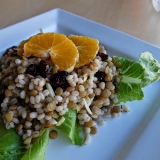
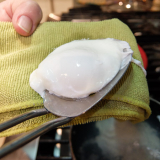
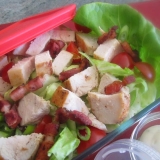

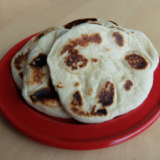

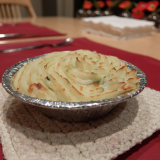
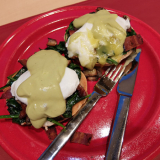

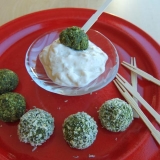

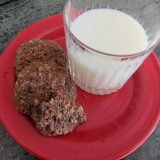

Leave A Comment